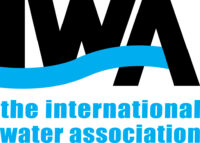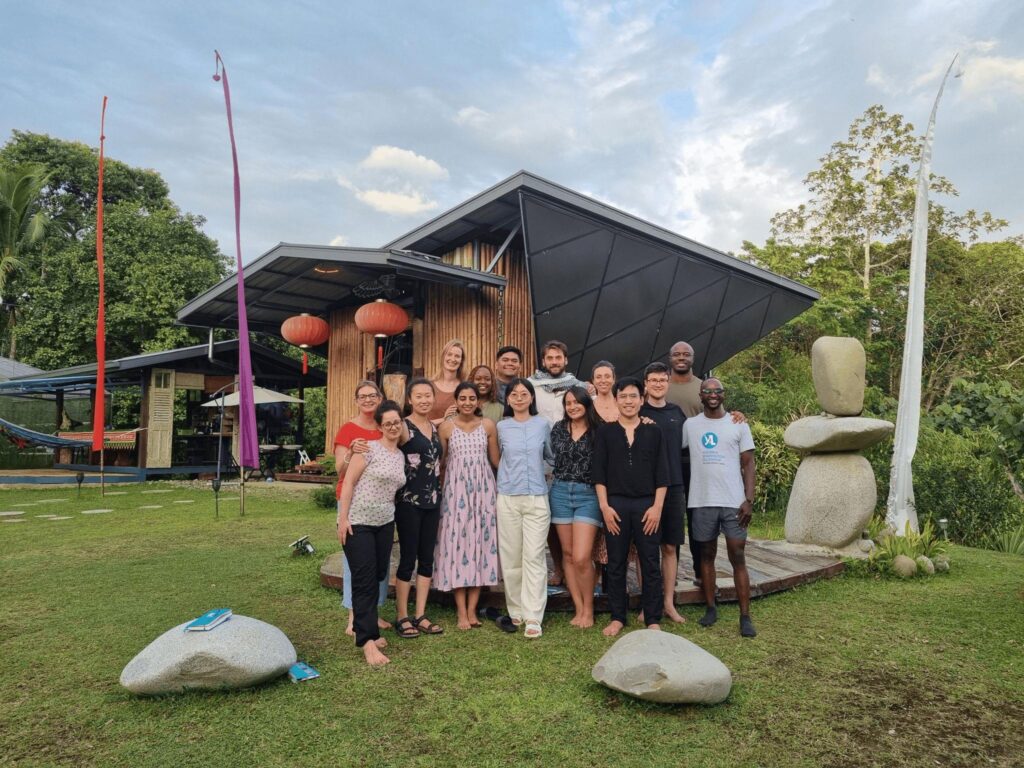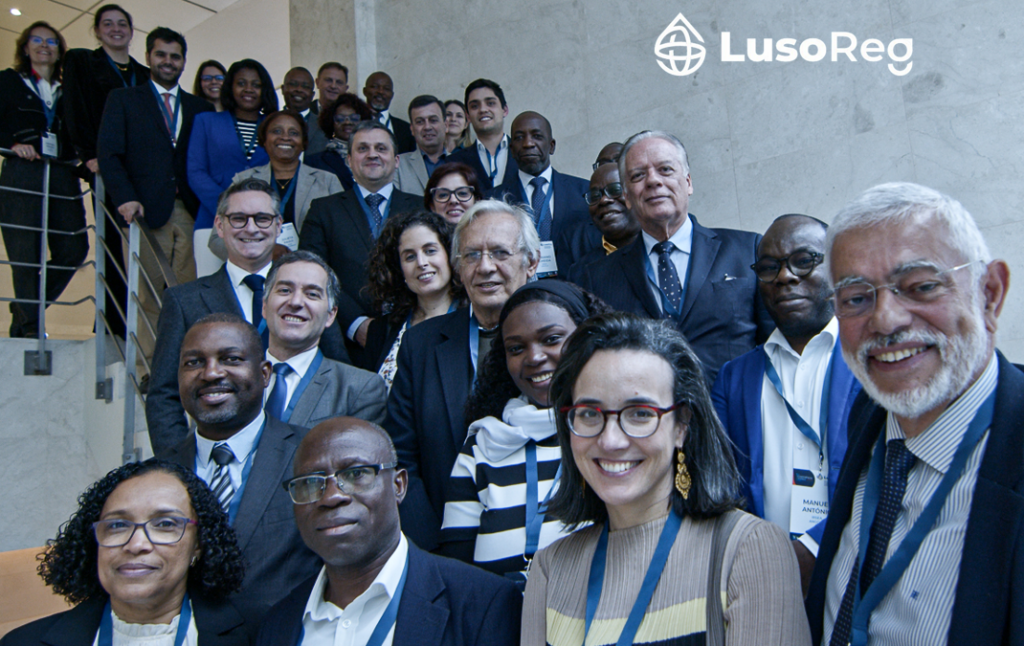Namibia has limited surface water resources, and most of its rivers are ephemeral, as they depend highly on the erratic and seasonal rainfall and only flow intermittently. The country therefore relies heavily on groundwater, which is often the primary source of water for both urban, rural communities and industries, including mines. The country also experiences frequent droughts and changing rainfall patterns, leading to water scarcity and uncertainties.
A resilient approach to bulk water supply in an arid climate: the case of NamWater, Namibia
Namibia has limited surface water resources, and most of its rivers are ephemeral, as they depend highly on the erratic and seasonal rainfall and only flow intermittently. The country therefore relies heavily on groundwater, which is often the primary source of water for both urban, rural communities and industries, including mines. The country also experiences frequent droughts and changing rainfall patterns, leading to water scarcity and uncertainties. From the rainfall received in Namibia, it is estimated that only 2% of the water ends up as surface run-off, while 1% recharges groundwater, 83% is lost through evaporation and 14% is lost through evapotranspiration. This reality furthermore makes it both costly and challenging to ensure water supply security to consumers.
Rainfall in most parts of the country has not been favourable over the past decade resulting in very low inflows into all the dams around the country. Also, the central area of Namibia has been equally affected, and this is further aggravated when measured against its increasing demand for water. The impact of this increasing water demand is further compounded by extreme weather events – particularly frequent and prolonged droughts as a result of climate change, The planning for sustainable water supply in sufficient quantities by the utility has become a complicated exercise but remains imperative.
Adapting to climate change
Water resources, infrastructure, and technologies have been prioritized in NamWater’s climate action efforts. NamWater’s strategic plan is aligned with Namibia’s Vision 2030 goals and guided by the principles outlined in the National Development Plans (NDPs) as well as the Harambee Prosperity Plan . To ensure continuous water supply services, NamWater has implemented several key adaptation measures implemented. Amongst these includes: (i) inter basin water transfer to bring water to demand area and minimise evaporation losses. This is evident in the case of the three-dam system implemented to supply water to the central area of Namibia (ii) development of deep wells as in the case of the Ohangwena aquifer wells and (iii) installation of four brackish groundwater desalination plants (two in the south powered by renewable energy (solar and wind) while the other two are in the northern part of Namibia powered by grid). Collaboration with key stakeholders is also taken to develop seawater desalination and wastewater reclamation plants to address Namibia’s water issues.
Further to this, NamWater has invested into the development of artificial/managed aquifer recharge/ water banking of surface water into groundwater aquifers to reduce evaporation and use during drought. In connection to this, the government of the Republic of Namibia has approved the construction of 20 Mm3/year seawater desalination plant to supply water to the central coastal and central parts of Namibia to ensure enterprise resilience and water resources sustainability, NamWater recently reviewed its scenario plans in response to climate change and global pandemics (Covid-19).
Pictures 1-4 illustrates NamWater’s activities toward climate action.

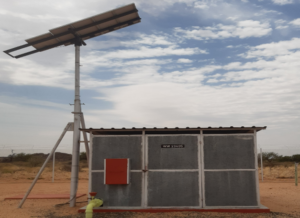
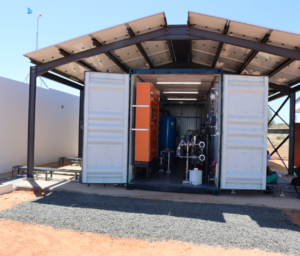

Mitigation actions
According to the Emissions Database for Global Atmospheric Research (2023), Namibia accounts for 0.02% of global greenhouse gas emissions. By 2030, the country intends to reduce greenhouse gas emissions by 91%. In the quest to contribute to this target, NamWater is committed to reducing its use of grid electricity from coal in its operations. The electricity (grid) cost consumed by NamWater’s schemes makes up approximately 20% to 30% of the NamWater’s total annual operating cost. This cost is expected to increase as new water infrastructure are implemented (e.g. desalination schemes) to meet the ever-increasing water demand. To minimize the cost of energy consumed by NamWater’s water supply schemes, NamWater has collaborated with a Namibian University to evaluate the viability and suitability of using renewable energy at NamWater’s water supply schemes. As part of its efforts to reduce grid energy consumption, the utility incorporated solar power into its operations. Currently, NamWater uses standalone hybrid renewable energy (solar and wind) to power its two desalination plants in the southern area of Namibia (Grunau and Bethanie) and to abstract water from boreholes.
Communication with citizens
NamWater continues to increase employee and stakeholder understanding of the impact of climate change on water resources through information sharing sessions at different levels. In October 2023, the utility led its first-ever national workshop on Water Security and Climate Change. This was attended by representatives from various ministries, local authorities, mines, funding organizations, international communities etc. NamWater also participated in the COP28 UN Climate Change Conference in Dubai. Considering the scenario plans, NamWater had 43 research projects, 81 development projects, and 86 construction projects in 2022 were focused on enhancing resilience to adapt to the impact of climate change. In addition, NamWater has invested about N$ 1.5 million in capacity building of its employees, including participation in various climate-change-related trainings and conferences around the world in 2022 to enhance understanding of adaptive measures required to adapt to climate change and variability.
Lessons learned
- Inter-basin water transfer requires proper timing whereas receiving reservoir sizing should be optimal to counter evaporation.
- Due to its good quality, water from deeper wells may not require advanced treatment.
- Solar PV is the most viable RE that may be adopted for water treatment for water schemes that are located far from the national grid.
- Small-scale RO desalination using hybrid renewable energy may result in higher unit cost of water produced from such plants.
- For remote areas, containerized reverse osmosis desalination technologies offer acceptable water purification which is easy to use or deploy.
- Adequate stakeholder identification and engagements to ensure successful project implementation.
- Natural events such as algal and sulphur eruptions are important environmental design considerations for seawater desalination projects.
Submit your Utility Case Story
Feeling inspired by this story? Learn more about the IWA Climate Smart Utilities Initiative or contact us at climate@iwahq.org
